Welcome to Incheon! As South Korea’s gateway to the world, Incheon is home to the country’s largest international airport and a bustling port, making it a bustling hive of activity. But beyond its transport terminals lies a city rich in heritage, culinary delights, and breathtaking landscapes. There’s an abundance of things to do in Incheon that will leave you enchanted.
source: Rigelotus on YouTube
From exploring the charming streets of Incheon Chinatown to marveling at the futuristic architecture of Songdo Central Park, the city offers a diverse range of experiences. Wander through ancient temples, savor delectable street food, or take a ferry to one of the many nearby islands. Incheon is not just a transit point. It’s a destination in its own right waiting to be discovered.
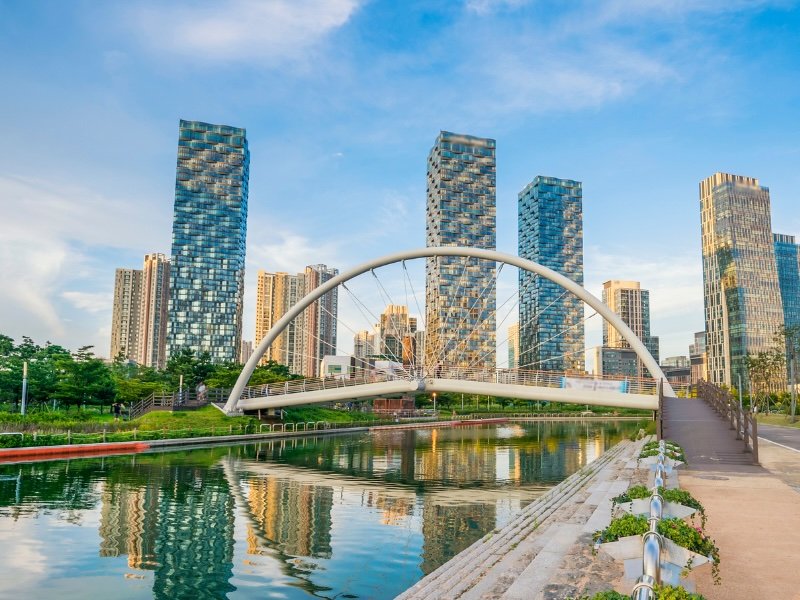
Why Visit Incheon?
- Cultural Diversity: Experience a unique blend of Korean and international cultures.
- Historical Sites: Explore landmarks that tell tales of Korea’s rich past.
- Natural Beauty: Enjoy scenic coastal views, parks, and islands.
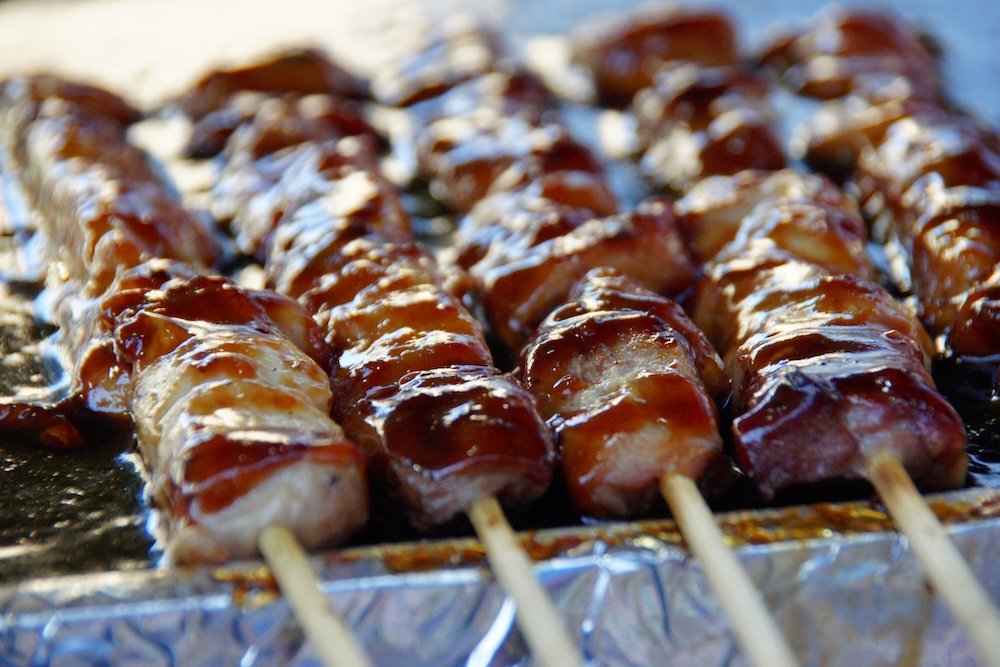
Tip: The best times to visit Incheon are during spring (April to June) and autumn (September to November) when the weather is pleasant, and the city is adorned with cherry blossoms or fall foliage!
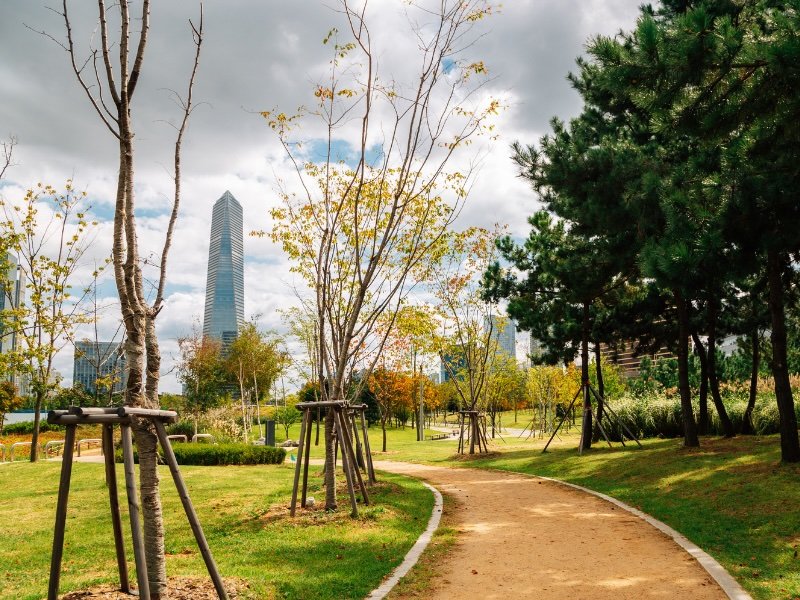
Top 20 Things To Do in Incheon, Korea For Visitors
1. Explore Incheon Chinatown
Step into a different world as you wander through Incheon Chinatown, the largest and oldest Chinatown in South Korea. Established in 1883, this vibrant neighborhood is a colorful tapestry of Chinese and Korean cultures. Red lanterns sway above the streets, and the aroma of authentic Chinese cuisine fills the air, inviting you to indulge in a culinary adventure.
Discover ornate gates like the Paeru, marking the entrance with intricate designs that symbolize good fortune and prosperity. The streets are lined with traditional Chinese architecture, including buildings adorned with dragon motifs and vibrant murals. Visit the Jayu Park nearby, where you can find the Statue of General Douglas MacArthur, a tribute to his role in the Incheon Landing during the Korean War. From the park, enjoy panoramic views of the city and port, offering a glimpse into Incheon’s maritime heritage.
Don’t miss the Jjajangmyeon Museum, dedicated to the famous Korean-Chinese noodle dish that originated here. The museum provides interactive exhibits that showcase the history and evolution of Jjajangmyeon, allowing you to appreciate its cultural significance. Throughout Chinatown, you’ll find an array of shops selling traditional handicrafts, teas, and souvenirs that reflect the fusion of cultures.
- Cultural Experience: Immerse yourself in a blend of Chinese and Korean traditions, evident in the architecture, festivals, and daily life.
- Culinary Delights: Savor authentic dishes like Jjajangmyeon (black bean noodles), Tanghulu (candied fruit skewers), and Baozi (steamed buns).
- Historical Sites: Explore museums, temples, and landmarks that tell the area’s rich history and the stories of early Chinese immigrants.
Tip: Visit during the annual Chinatown Culture Festival in May to enjoy traditional performances, lion dances, parades, and street food stalls showcasing both cultures. It’s a vibrant celebration that brings the community together!
2. Stroll Through Songdo Central Park
Escape the urban hustle in Songdo Central Park, a sprawling green oasis in the heart of Incheon’s international business district. Inspired by New York’s Central Park, this eco-friendly space features lush lawns, walking paths, and a seawater canal that winds through the landscape.
Rent a water taxi, canoe, or even a transparent kayak to glide along the canal, offering a unique perspective of the city’s impressive skyline. The canal is illuminated at night, creating a romantic ambiance perfect for evening excursions. Admire the futuristic architecture of nearby buildings like the Tri-Bowl, an iconic cultural complex with three bowl-shaped structures representing the sky, sea, and earth, and the Northeast Asia Trade Tower (NEATT), one of Korea’s tallest skyscrapers.
The park is also home to the Rabbit Island, where you can meet and feed friendly bunnies roaming freely. Families will appreciate the Children’s Playground, complete with modern equipment and safety features. Seasonal flower gardens, including tulip displays in spring and chrysanthemum gardens in autumn, add bursts of color throughout the year.
- Leisure Activities: Enjoy boating, cycling along designated paths, or a leisurely picnic on the expansive lawns.
- Architectural Marvels: Witness cutting-edge building designs that showcase sustainable and innovative engineering.
- Family-Friendly: Plenty of open space and activities for children, including playgrounds and interactive art installations.
Tip: Visit in the evening to see the park illuminated with soft lighting and LED installations, creating a magical atmosphere perfect for a romantic stroll or stunning photography!
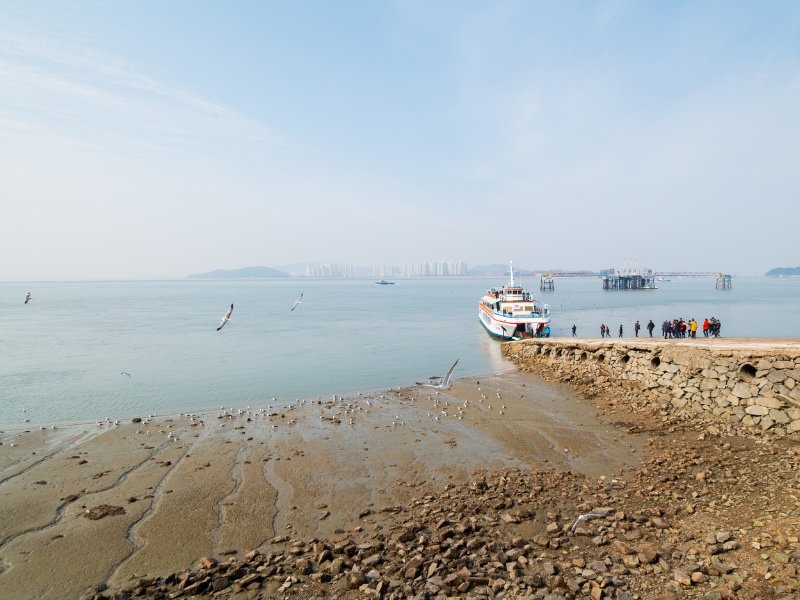
3. Visit Wolmido Island
Once a true island, now connected to the mainland by a causeway, Wolmido is a popular leisure destination offering a mix of entertainment, culture, and scenic beauty. The Wolmido Theme Park beckons with classic amusement rides like the Viking ship, Ferris wheel, and roller coasters, providing fun and thrills for all ages. The park’s lively atmosphere is enhanced by street performers, musicians, and artists showcasing their talents.
Stroll along the Culture Street, lined with artists creating caricatures, calligraphy, and traditional crafts. The street is also home to numerous seafood restaurants and cafes with outdoor seating, allowing you to dine while enjoying views of the sea. Fresh catches like grilled mackerel, steamed clams, and spicy seafood stews are local specialties not to be missed.
For a more tranquil experience, visit the Wolmi Traditional Park, which offers a serene escape with traditional Korean gardens, pavilions, and ponds adorned with lotus flowers. The park provides insight into Korea’s cultural heritage through architectural styles and landscaping techniques. Walking trails lead to observation decks where you can watch ships entering the port or gaze at the horizon.
- Entertainment: Experience rides and games at the theme park, suitable for families, couples, and solo travelers seeking excitement.
- Cultural Experience: Enjoy street art, live performances, and engage with local artists and vendors.
- Seafood Galore: Dine on fresh catches at local eateries, with options ranging from casual street food to full-course meals.
Tip: Time your visit to catch the sunset over the sea—it’s a sight you won’t want to miss! The vibrant colors reflecting on the water create a picturesque scene that’s perfect for photography.
4. Discover the Incheon Grand Park
Nestled between Gwanmosan and Sangasan mountains, Incheon Grand Park is the city’s largest urban park, offering a breath of fresh air and a dose of nature amidst the bustling metropolis. Spanning over 727 acres, the park features vast lawns, a tranquil lake, and well-maintained trails suitable for walking, jogging, or cycling.
Visit the Incheon Grand Park Children’s Zoo, home to animals like deer, peacocks, rabbits, and exotic birds. The zoo provides educational programs and interactive experiences for children, fostering an appreciation for wildlife. The Botanical Garden showcases a variety of plant species, including tropical plants, cacti, and seasonal flower displays. Greenhouses allow you to explore diverse ecosystems year-round.
In winter, the park transforms into a snowy wonderland, ideal for sledding and snow-related activities. During warmer months, paddleboats are available for rent on the lake, and open-air concerts and cultural events often take place in the amphitheater. Picnic areas equipped with tables and barbecue facilities make it a popular spot for family gatherings.
- Outdoor Activities: Hiking trails lead to mountain peaks offering panoramic views, while cycling paths wind through scenic routes.
- Family-Friendly: Attractions suitable for children, including a zoo, playgrounds, and educational centers.
- Seasonal Beauty: Enjoy cherry blossoms in spring, vibrant foliage in autumn, and colorful flower festivals throughout the year.
Tip: Rent a bicycle from the park’s rental shop to explore more of the area comfortably. Early mornings or weekdays are less crowded, providing a more peaceful experience.
5. Explore Ganghwa Island
Rich in history and natural beauty, Ganghwa Island is the fifth-largest island in Korea, offering a diverse range of attractions that span centuries. The island is a treasure trove of cultural heritage sites, with over 120 dolmens, ancient megalithic tombs dating back to the Bronze Age, listed as UNESCO World Heritage sites. These dolmens provide invaluable insight into prehistoric burial practices and social structures.
Hike up Goryeosan Mountain, especially during the Azalea Festival in spring when the slopes are blanketed with vibrant pink flowers. The mountain offers trails suitable for various fitness levels and rewards hikers with breathtaking views of the West Sea and surrounding landscapes. The Ganghwa History Museum provides context to the island’s past, displaying artifacts from the Goryeo Dynasty and offering interactive exhibits.
Visit the Jeondeungsa Temple, one of Korea’s oldest Buddhist temples, originally built in the 4th century. The temple complex boasts intricate carvings, ornate pagodas, and ancient trees that create a serene atmosphere. Participate in a temple stay program to immerse yourself in Buddhist practices, including meditation, tea ceremonies, and traditional rituals.
- Historical Sites: Discover ancient dolmens, fortresses like Chojijin and Deokjinjin, and historical temples that tell stories of Korea’s past.
- Natural Scenery: Hike mountains, explore coastal wetlands, and enjoy sandy beaches like Dongmak Beach.
- Cultural Experience: Participate in traditional crafts like Ganghwa Hwamunseok (handwoven sedge mats) and visit local markets for regional specialties.
Tip: Allocate a full day or even an overnight stay to explore the island fully. Consider renting a car or joining a guided tour for convenient travel between sites, as public transportation may be limited.
6. Visit the Incheon Landing Operation Memorial Hall
Delve into modern history at the Incheon Landing Operation Memorial Hall, commemorating the pivotal Incheon Landing during the Korean War in 1950. The operation, led by General Douglas MacArthur, was a turning point that helped recapture Seoul from North Korean forces. The museum provides detailed exhibits, including artifacts, photographs, and dioramas depicting the planning and execution of the operation.
The memorial hall is designed to resemble a landing ship, symbolizing the amphibious assault. Inside, interactive displays and multimedia presentations offer an immersive experience, helping visitors understand the complexities of the military strategy and its impact on the war’s outcome. Personal stories, letters, and relics provide a human perspective on the sacrifices made.
Outside, view military equipment like tanks, aircraft, artillery, and naval vessels, allowing for up-close examination of the machinery used during the war. The memorial park surrounding the hall features monuments and statues honoring the soldiers and nations involved.
- Educational Experience: Learn about the Korean War and Incheon’s strategic role through comprehensive exhibits.
- Historical Artifacts: See military equipment and personal items from soldiers, providing tangible connections to history.
- Panoramic Views: The hilltop location offers excellent views of the city and port, adding a reflective backdrop to the memorial.
Tip: Guided tours are available and provide deeper insights—check the schedule upon arrival or consider booking in advance. English-language materials and audio guides may be limited, so planning ahead enhances the experience.
7. Explore the Songwol-dong Fairy Tale Village
Step into a storybook at the Songwol-dong Fairy Tale Village, where childhood classics come to life through vibrant murals, sculptures, and themed streets. The neighborhood was revitalized in 2013 as part of an urban regeneration project, transforming it into a whimsical destination that appeals to all ages.
Wander through streets adorned with characters from beloved fairy tales like Cinderella, Pinocchio, Snow White, and The Little Mermaid. Colorful houses, painted stairways, and 3D installations create immersive scenes perfect for capturing memorable photos. Interactive elements, such as benches shaped like storybook characters or doorways leading to “magical” realms, add to the charm.
Local shops sell themed souvenirs, handmade crafts, and sweet treats like cotton candy and ice cream that complement the magical atmosphere. Cafes decorated with fairy tale motifs offer cozy spots to rest and enjoy refreshments.
- Artistic Murals: Enjoy over 50 vibrant street art pieces at every turn, each telling a different story.
- Family-Friendly: Great for kids and the young at heart, offering interactive experiences and playful environments.
- Photography Spots: Capture creative and colorful memories in settings unlike any other.
Tip: Visit on weekdays to avoid crowds and have uninterrupted photo opportunities. Early mornings offer the best lighting for photography and a quieter atmosphere.
8. Visit the Sorae Ecology Park
Once a bustling salt production site, Sorae Ecology Park has been transformed into a protected wetland area teeming with wildlife and natural beauty. The park covers over 1.56 million square meters, featuring expansive tidal flats, reed fields, and salt marshes that provide habitats for various bird species, including migratory birds like herons and egrets.
Wooden boardwalks guide you through tall reeds and tidal flats, allowing you to observe the ecosystem up close without disturbing it. The park’s iconic red windmills, remnants of the salt farm era, stand majestically against the horizon, making for picturesque backdrops and a touch of nostalgia.
Learn about the area’s history at the Salt History Museum, which offers exhibits on traditional salt farming techniques, tools, and the lives of salt workers. The museum provides educational programs and hands-on activities, such as salt harvesting demonstrations.
- Nature Exploration: Observe over 70 bird species and various aquatic life in their natural habitat, ideal for birdwatching enthusiasts.
- Scenic Beauty: The vast reed fields change colors with the seasons, offering stunning landscapes, especially during sunrise and sunset.
- Educational Visits: Gain insight into traditional salt farming and the importance of wetlands through interactive exhibits and programs.
Tip: Bring binoculars for birdwatching and wear comfortable shoes suitable for walking on boardwalks. Insect repellent and sunscreen are recommended, especially during warmer months.
9. Experience Spa On Air at Incheon Airport
Whether you have a layover or simply crave relaxation, head to Spa On Air located within Incheon International Airport’s Terminal 1. This 24-hour spa offers traditional Korean bathhouse experiences, providing a sanctuary for weary travelers to refresh and rejuvenate.
Facilities include hot and cold baths infused with minerals, dry and wet saunas, and relaxation lounges equipped with comfortable recliners and entertainment options like TVs and Wi-Fi. Private sleeping rooms are available for those needing rest between flights, complete with amenities like blankets, pillows, and wake-up call services.
Refresh yourself with a range of services like massages, facials, and skincare treatments offered by professional therapists. The spa provides toiletries, towels, and lockers for your convenience, ensuring a hassle-free experience.
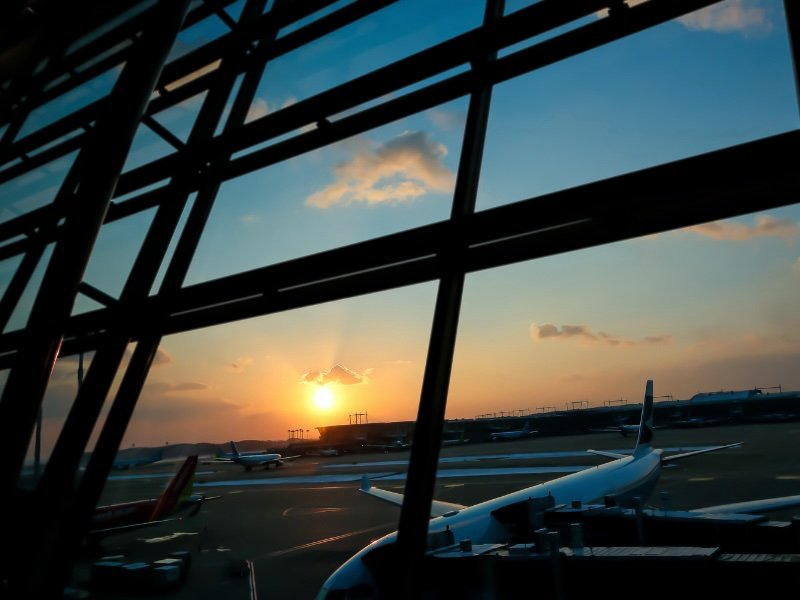
- Convenience: Accessible within the airport for transit passengers, eliminating the need to exit security areas.
- Relaxation: Unwind before or after your journey, alleviating travel stress and fatigue.
- Facilities: Enjoy amenities like showers, grooming stations, and charging ports for electronic devices.
Tip: Remember to follow Korean spa etiquette—clothing is typically not worn in single-sex areas, and showering before entering pools is required. Be respectful of others by maintaining a quiet atmosphere in relaxation areas.
10. Visit the Incheon Open Port Museum
Step back in time at the Incheon Open Port Museum, which showcases the city’s history as a gateway to foreign trade in the late 19th and early 20th centuries. The museum is housed in a restored Japanese merchant building, preserving architectural details of the era, such as tiled roofs, wooden beams, and intricate facade designs.
Exhibits include artifacts, photographs, and interactive displays detailing the cultural exchanges, economic developments, and modernization that occurred during the port’s early days. Learn about the lives of merchants, diplomats, and locals who played pivotal roles in transforming Incheon into a cosmopolitan hub.
The museum also addresses the complex history of foreign concessions and the impact of colonization on Korea, providing a nuanced perspective on historical events. Multimedia presentations and guided tours enhance the educational experience.
- Historical Insight: Learn about Incheon’s role in Korea’s modernization and the opening of its ports to international trade.
- Cultural Exhibits: Explore the influences of foreign traders from countries like Japan, China, and Western nations on local culture, architecture, and society.
- Architectural Appreciation: Admire the well-preserved building, a rare example of early modern architecture in Korea.
Tip: Combine your visit with nearby historical sites like the Jayu Park, Chinatown, and the Former Japan Bank of Korea building for a comprehensive experience of the Open Port Area. Many attractions are within walking distance.
11. Enjoy the Incheon Art Platform
For art aficionados, the Incheon Art Platform is a creative complex housed in a cluster of renovated buildings from the 1930s. Spanning over 9,000 square meters, the platform consists of 13 buildings that have been transformed into galleries, studios, performance spaces, and educational facilities, blending historical architecture with contemporary design.
Explore galleries featuring works from local and international artists across various mediums, including painting, sculpture, photography, video art, and installations. The platform hosts rotating exhibitions that reflect current trends, social issues, and experimental approaches in art.
Participate in cultural programs such as workshops, artist talks, and interactive performances that engage the community and foster a vibrant artistic environment. The Artist-in-Residence program allows you to meet creators from around the world and gain insights into their creative processes.
- Art Exhibitions: View diverse contemporary artworks that challenge conventions and provoke thought.
- Cultural Events: Attend performances ranging from theater and dance to multimedia shows, often held in outdoor courtyards.
- Historic Venue: Experience art in a setting that preserves Incheon’s architectural heritage while promoting modern innovation.
Tip: Check the event calendar online to catch special exhibitions or participate in interactive workshops. Many programs are free or low-cost, making art accessible to all.
12. Wander Through Baedari Secondhand Bookstore Alley
Book lovers will find solace in the quaint Baedari Secondhand Bookstore Alley, a charming street steeped in history and literary culture. Once a thriving hub for intellectuals and students during the 1960s and 70s, the area has preserved its nostalgic atmosphere despite urban development pressures.
The alley is lined with independent bookstores, some of which have been operating for decades. Browse through shelves filled with rare finds, from old Korean novels and poetry collections to foreign language books, vintage magazines, and out-of-print editions. The owners are often passionate bibliophiles eager to share recommendations and stories.
Cafes with cozy interiors and artistic decor offer spaces to read, write, or simply soak in the ambiance. Many host cultural events like book readings, poetry slams, and small concerts, contributing to the area’s creative spirit.
- Literary Exploration: Discover a wide selection of secondhand books, antiques, and collectibles that cater to diverse interests.
- Cozy Atmosphere: Relax in quiet cafes with a literary theme, enjoying hand-brewed coffees and homemade pastries.
- Cultural Experience: Engage with local shop owners and patrons, fostering connections through a shared love of literature.
Tip: Some stores may have limited English selections, but the experience is worth it for the ambiance alone. Don’t hesitate to ask for assistance—many shopkeepers can help you find hidden gems or provide translations.
13. Visit the Ara Canal and Gyeongin Ara Waterway
The Ara Canal connects the Han River to the Yellow Sea, spanning 18 kilometers and offering scenic views and recreational activities. The canal was constructed to facilitate water transport and prevent flooding but has become a popular leisure destination.
Walk or cycle along the well-maintained paths flanking the canal, adorned with art installations, flower beds, and rest areas. The canal features modern architectural elements like lock gates and suspension bridges, including the striking Incheon Bridge that illuminates beautifully at night.
Enjoy a leisurely cruise on the Ara Marine Center‘s boats, which offer tours highlighting the canal’s engineering marvels and surrounding landscapes. Fishing spots are designated along the banks, attracting anglers hoping to catch freshwater species.
- Outdoor Activities: Ideal for walking, jogging, cycling, rollerblading, or picnicking along the scenic routes.
- Scenic Views: Enjoy picturesque landscapes, modern bridges, and views of passing vessels, blending urban and natural elements.
- Boat Tours: Experience the canal from the water, with options ranging from short cruises to dining experiences on luxury yachts.
Tip: Rent a bicycle from nearby rental shops to explore more of the canal comfortably. Sunset cruises are particularly popular and offer stunning views—booking in advance is recommended.
14. Explore the Incheon National University Songdo Campus
Architecture enthusiasts will appreciate the Incheon National University Songdo Campus, known for its modern and innovative building designs that reflect sustainability and futuristic concepts. The campus is part of the Songdo International Business District, a smart city project emphasizing technology and eco-friendly practices.
Wander through the campus to admire structures like the Campus Library, featuring a glass facade and open spaces that promote natural light and energy efficiency. The Business School building showcases dynamic shapes and eco-friendly materials. Public art installations, sculptures, and landscaped gardens enhance the aesthetic appeal.
The campus is set within a park-like environment, with ponds, walking trails, and seating areas that encourage relaxation and community engagement. Educational facilities often host public lectures, exhibitions, and cultural events open to visitors.
- Architectural Tour: Witness cutting-edge campus architecture that embodies principles of sustainable design and innovation.
- Art and Design: Enjoy public art scattered throughout the grounds, including works by renowned Korean and international artists.
- Serene Environment: Ideal for a quiet walk, studying outdoors, or simply appreciating the harmony between built and natural environments.
Tip: Visit during weekdays when the campus is lively with student activities, but be respectful of academic spaces. Guided tours may be available upon request for a more in-depth exploration.
15. Visit the Compact Smart City Exhibition Hall
Get a glimpse into the future at the Compact Smart City Exhibition Hall in Songdo. This interactive center showcases Incheon’s smart city initiatives, including sustainable technologies, urban planning, and eco-friendly practices that aim to enhance quality of life.
Engage with exhibits featuring virtual reality experiences, interactive models, and multimedia presentations. Learn how Songdo integrates technology to manage energy consumption, waste disposal, transportation, and communication networks efficiently. The Ubiquitous City concept is demonstrated through examples of smart homes, offices, and public services.
The exhibition hall also addresses global challenges like climate change and urbanization, highlighting Incheon’s role in pioneering solutions. Educational programs and workshops are offered for various age groups, fostering awareness and inspiration.
- Educational Experience: Understand smart city concepts and how they are implemented in real-world settings.
- Interactive Exhibits: Engage with cutting-edge technology that showcases the potential of interconnected systems.
- Inspiration: See real-world applications of innovative solutions that could shape future cities globally.
Tip: Guided tours are available and highly informative—consider booking one in advance for a comprehensive understanding. The facility is often visited by international delegations, so multilingual support may be available.
16. Enjoy a Day at Eurwangni Beach
Located near Incheon International Airport on Yeongjong Island, Eurwangni Beach is a popular spot for locals and tourists seeking sun, sea, and sand. The beach stretches over 700 meters, with fine white sand gently sloping into clear, shallow waters ideal for swimming.
The area is equipped with facilities like showers, restrooms, changing rooms, and shaded picnic areas. Water sports such as jet skiing, banana boat rides, and paddleboarding are available for thrill-seekers. The beach is family-friendly, with lifeguards on duty during peak seasons.
The promenade is lined with seafood restaurants offering the freshest catches of the day, including grilled shellfish, sashimi platters, and spicy seafood soups. At low tide, the beach reveals wide mudflats where visitors can dig for clams and crabs, adding an interactive element to the experience.
- Beach Activities: Enjoy swimming, sunbathing, beach volleyball, and water sports in a clean and safe environment.
- Seafood Dining: Feast on dishes like grilled clams, steamed prawns, and spicy Haemultang (seafood stew) at seaside eateries.
- Scenic Views: Capture stunning sunsets over the sea, with the sky painted in hues of orange, pink, and purple.
Tip: Bring a beach mat, sunscreen, and appropriate attire for beach activities. Check tidal schedules if you’re interested in exploring the mudflats or shellfish gathering. Accommodations like pensions and guesthouses are available nearby for overnight stays.
17. Visit the Memorial Hall for Incheon Landing Operation
Another site commemorating the Korean War, the Memorial Hall for Incheon Landing Operation offers detailed exhibits about the strategic amphibious invasion known as Operation Chromite. The museum complements the previously mentioned Incheon Landing Operation Memorial Hall, providing additional perspectives and artifacts.
The facility includes a 3D theater showing documentaries and reenactments, immersive dioramas depicting battle scenes, and interactive displays that allow visitors to simulate strategic decisions. Personal stories from soldiers, letters, and multimedia presentations provide emotional depth and humanize the historical events.
Outside, find memorial statues, a replica of a landing craft, and a park area with walking paths and reflective spaces. The hall emphasizes themes of peace, freedom, and the importance of international cooperation.
- Historical Education: Deepen your knowledge of the Korean War through comprehensive exhibits and engaging presentations.
- Artifacts Display: View weapons, uniforms, medals, and personal items from soldiers of various nations involved in the operation.
- Reflection Space: Pay respects in a serene memorial park that honors the sacrifices made for peace.
Tip: Photography may be restricted in some areas—always check for signs and respect guidelines. Consider combining your visit with nearby historical sites for a full day of exploration.
18. Explore Jeondeungsa Temple
Located on Ganghwa Island, Jeondeungsa Temple is one of Korea’s oldest Buddhist temples, dating back to the 4th century. The temple has a rich history intertwined with Korea’s religious and cultural development, having been rebuilt and expanded over the centuries.
The temple complex includes beautifully preserved wooden buildings adorned with intricate carvings, colorful paintings, and symbolic decorations. The Daeungbojeon Hall houses statues of Buddha and Bodhisattvas, while the Yaksajeon Hall is dedicated to the Medicine Buddha. Stone pagodas, lanterns, and ancient trees add to the serene ambiance.
Walk through tranquil forests surrounding the temple, where trails lead to smaller hermitages and viewpoints overlooking the island. The temple also offers temple stay programs for those interested in immersive cultural experiences, including meditation, tea ceremonies, Buddhist chanting, and communal meals.
- Cultural Heritage: Admire ancient architecture and art that reflect Korea’s Buddhist traditions and craftsmanship.
- Spiritual Retreat: Enjoy a serene environment conducive to reflection, meditation, and spiritual growth.
- Educational Programs: Participate in temple activities and rituals that provide insight into monastic life and teachings.
Tip: Dress modestly when visiting, covering shoulders and knees, and remove shoes when entering temple halls. Consider joining a temple stay for a unique overnight experience—reservations are required, and programs may vary by season.
19. Visit the Masian Tideland Education and Experience Center
Engage with nature at the Masian Tideland Education and Experience Center, located near Masian Beach. The center aims to educate visitors about the ecology of tidal flats, emphasizing environmental conservation and the importance of these ecosystems to marine life and local communities.
Interactive exhibits provide information on tidal organisms, ecological functions, and human impacts. Guided tours and hands-on programs allow participants to explore the tidal flats, catch clams and crabs, and observe wildlife in their natural habitats. Educational activities cater to all ages, making it a fun and informative outing for families.
The center also promotes sustainable practices, highlighting how responsible tourism and local livelihoods can coexist with environmental preservation. Facilities include classrooms, observation decks, and rest areas.
- Interactive Learning: Engage in educational activities about marine life, ecology, and conservation efforts.
- Outdoor Fun: Experience tidal flat exploration firsthand, with opportunities to collect shells, observe creatures, and enjoy the unique landscape.
- Family-Friendly: Suitable for children and adults alike, fostering environmental awareness through enjoyable experiences.
Tip: Wear waterproof shoes or boots, and bring a change of clothes—you might get muddy during the tidal flat activities! Check tide schedules to plan your visit when the flats are accessible. Sunscreen and hats are recommended on sunny days.
20. Experience the Nightlife at Bupyeong
End your day in Bupyeong, one of Incheon’s liveliest districts known for its bustling nightlife, shopping centers, and underground market. The area is a hub of entertainment, attracting a diverse crowd seeking food, fun, and excitement.
Explore the Bupyeong Underground Shopping Center, one of Asia’s largest underground markets, featuring over 1,400 shops selling fashion, accessories, cosmetics, electronics, and more. Bargain hunters will enjoy the variety and competitive prices.
Above ground, Bupyeong Culture Street is filled with bars, clubs, karaoke rooms (noraebang), and live music venues. Street performers and artists add to the vibrant atmosphere. The district offers a plethora of dining options, from street food stalls serving tteokbokki and hotteok to trendy cafes and international restaurants.
- Entertainment: Enjoy live music, dancing, karaoke, and performances that keep the energy high into the night.
- Shopping: Find bargains and unique items in the extensive underground market, open late for evening shoppers.
- Culinary Delights: Try local street food, explore themed bars, or indulge in dessert cafes offering creative treats.
Tip: Be mindful of the last train schedules if you’re relying on public transport, or plan for alternative transportation if staying out late. Keep an eye on personal belongings in crowded areas, and enjoy the nightlife responsibly.
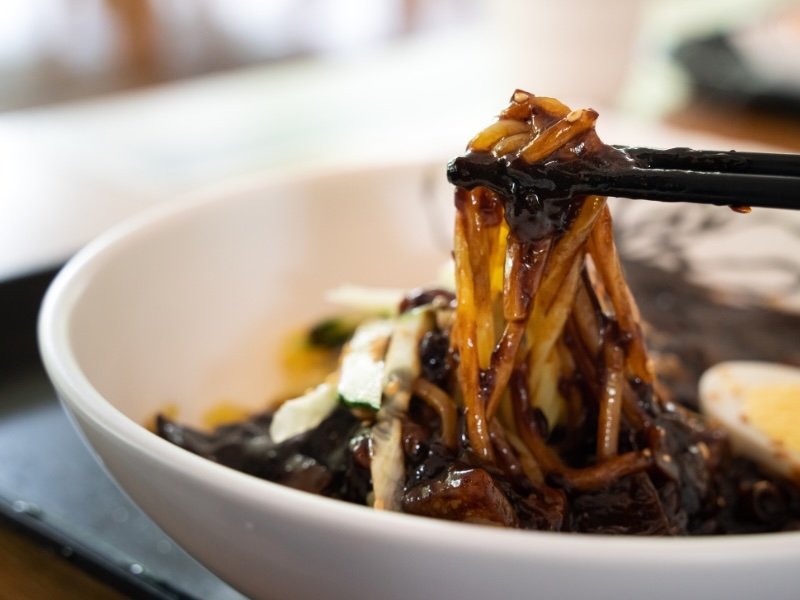
What To Eat and Drink in Incheon, South Korea
Savor Jjajangmyeon in Chinatown
Incheon’s Chinatown is the birthplace of Jjajangmyeon, a beloved Korean-Chinese noodle dish featuring thick wheat noodles smothered in a rich black bean sauce made from chunjang (black bean paste), diced pork, and vegetables.
- Local Specialty: Taste authentic Jjajangmyeon where it originated, prepared by chefs following traditional recipes passed down through generations.
- Variety: Try variations like Seafood Jjajangmyeon, which includes shrimp, squid, and mussels, or Gan Jjajang (dry version), where the sauce and noodles are served separately.
- Cultural Experience: Dine in restaurants with historical significance, some of which have been operating since the early 20th century, offering a glimpse into the culinary heritage.
Tip: Pair your meal with Tangsuyuk (sweet and sour pork or beef) for a complete culinary experience. Sharing dishes is common, allowing you to sample multiple items.
Enjoy Fresh Seafood at Sorae Fish Market
Visit the Sorae Fish Market to indulge in the freshest seafood caught daily by local fishermen. The market is a sensory delight, bustling with vendors selling a wide array of marine delicacies.
- Seafood Selection: Choose from live fish, shellfish, octopus, crabs, and more displayed in vibrant tanks and stalls.
- On-Site Dining: Have your purchase prepared at nearby restaurants or hoe jip (raw fish restaurants), where chefs can sashimi, grill, or cook the seafood according to your preference.
- Local Atmosphere: Experience a bustling traditional market, interacting with friendly vendors eager to showcase their products.
Tip: Prices can vary—don’t hesitate to compare stalls and negotiate politely. Visiting in the morning offers the freshest selection and a chance to witness the lively auction scenes.
Try Incheon’s Specialty, Gomchiguk
Gomchiguk is a traditional soup made with gomchi, a type of seaweed unique to the Incheon region, known for its tender texture and rich mineral content.
- Health Benefits: Gomchi is believed to aid digestion and provide essential nutrients like iodine and calcium.
- Warm and Comforting: The soup is typically prepared with a light broth seasoned with soy sauce, garlic, and sesame oil, making it ideal for chilly days or as a restorative meal.
- Cultural Dish: Offers a taste of local tradition, often enjoyed by fishermen and coastal communities.
Tip: Look for restaurants specializing in traditional Korean cuisine or ask locals for recommendations to find the most authentic versions. Pair the soup with side dishes like kimchi and jeon (savory pancakes) for a satisfying meal.
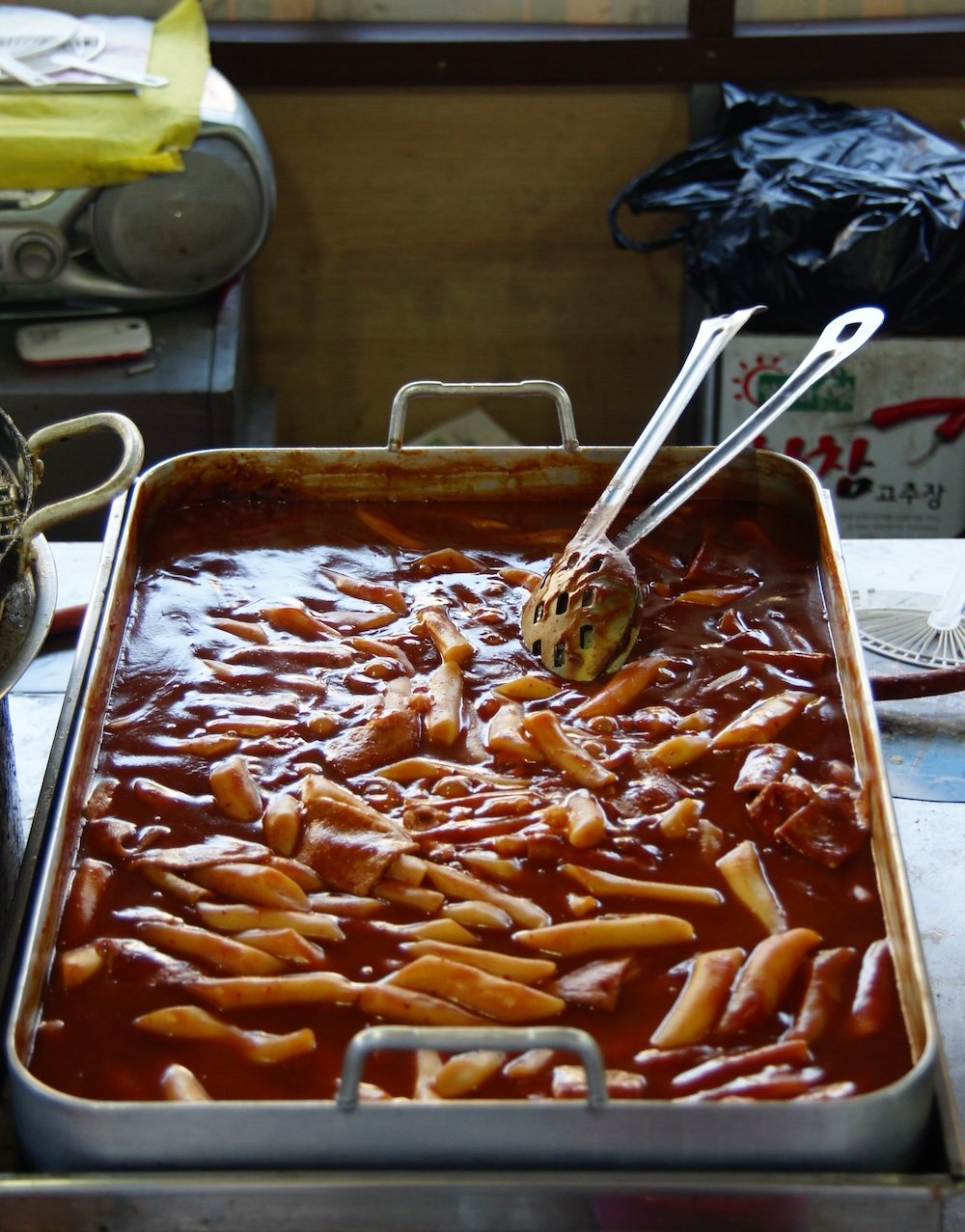
Indulge in Street Food at Bupyeong Market
Explore Bupyeong Market for an array of street food options that showcase Korea’s vibrant snack culture.
- Must-Try Snacks:
- Hotteok: Sweet pancakes filled with cinnamon, brown sugar, and nuts, crispy on the outside and gooey inside.
- Gimbap: Rice rolls wrapped in seaweed, filled with vegetables, egg, and sometimes meat or seafood.
- Tteokbokki: Spicy rice cakes simmered in a red pepper sauce, often accompanied by fish cakes and boiled eggs.
- Affordable Eats: Enjoy delicious food without breaking the bank, perfect for sampling multiple items.
- Vibrant Atmosphere: Soak in the local market vibes, interacting with vendors and fellow food enthusiasts.
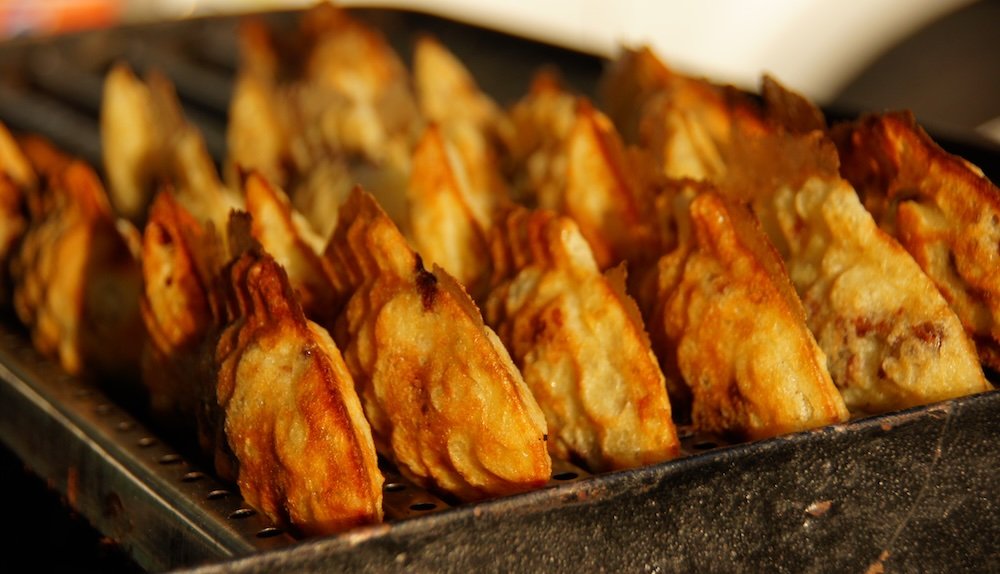
Tip: Carry cash in small denominations, as many vendors may not accept cards. Try a variety of snacks to experience the full spectrum of flavors, from sweet to savory and spicy.
Sip on Traditional Korean Tea
Visit a traditional tea house in Incheon to relax and rejuvenate, immersing yourself in Korea’s rich tea culture.
- Variety: Choose from teas like Omija-cha (five-flavor berry tea), offering a complex taste profile, or Yujacha (citron tea), known for its bright citrus flavor and vitamin C content.
- Cultural Experience: Enjoy the serene ambiance and traditional decor, often featuring wooden interiors, floor seating, and calming music.
- Health Benefits: Many Korean teas are known for their medicinal properties, promoting digestion, boosting immunity, and providing relaxation.
Tip: Tea houses often serve traditional snacks like yakgwa (honey cookies) or dasik (pressed sweets). Trying them alongside your tea enhances the experience and offers insight into Korean hospitality.
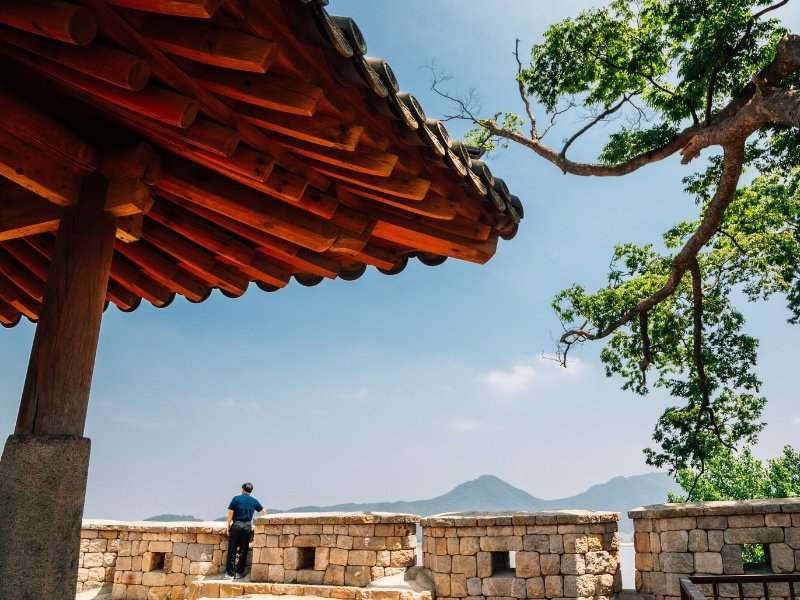
Tours For Visitors To Incheon, Korea
Join a Historical Walking Tour
Explore Incheon’s rich history with a guided walking tour that takes you through the city’s most significant sites.
- Expert Guidance: Learn from knowledgeable local guides who share stories, legends, and historical context that bring the sites to life.
- Key Sites: Visit Chinatown, Jayu Park, Songwol-dong Fairy Tale Village, and the Open Port Area, each offering unique insights into Incheon’s development.
- Cultural Insight: Gain a deeper understanding of Incheon’s transformation from a small fishing village to a modern metropolis, influenced by global interactions.
Tip: Wear comfortable shoes and check the weather forecast to dress appropriately. Morning tours often have fewer participants, allowing for a more personalized experience.
Take a Ferry to Nearby Islands
Embark on an island-hopping tour to destinations like Ganghwa Island, Jangbongdo, and Deokjeokdo, each offering distinct attractions.
- Natural Beauty: Enjoy scenic landscapes, pristine beaches, and hiking trails that showcase Korea’s coastal charm.
- Cultural Sites: Visit temples, fortresses, and historical landmarks that reveal the islands’ rich heritage.
- Outdoor Activities: Opportunities for fishing, cycling, camping, and participating in local festivals.
Tip: Check ferry schedules in advance and be mindful of return times to avoid being stranded. Some islands offer accommodation options if you wish to stay overnight.
Experience a Food Tour in Bupyeong
Join a culinary tour to explore Incheon’s diverse food scene, guided by experts who know the best spots.
- Local Delicacies: Taste signature dishes, street food, and hidden gems that you might miss on your own.
- Market Exploration: Navigate through Bupyeong Market with a guide who can introduce you to vendors and explain the significance of various foods.
- Cultural Exchange: Learn about food history, preparation methods, and Korean dining etiquette.
Tip: Inform the tour operator of any dietary restrictions beforehand to ensure a pleasant experience. Tours often include generous portions, so arrive hungry!
Participate in a Temple Stay at Jeondeungsa
Immerse yourself in Korean Buddhism with a temple stay program at Jeondeungsa Temple.
- Cultural Immersion: Participate in meditation sessions, tea ceremonies, Buddhist chanting, and communal meals with monks.
- Historical Education: Learn about the temple’s history, architectural features, and spiritual significance.
- Personal Growth: Experience tranquility and mindfulness practices that promote inner peace and reflection.
Tip: Book in advance and be prepared to follow temple rules, including dress codes, silence during certain periods, and early wake-up times. Respect for the monastic lifestyle enhances the authenticity of the experience.
Explore Songdo’s Smart City with a Guided Tour
Discover the innovations of Songdo International Business District through a guided tour that highlights its technological and environmental advancements.
- Architectural Highlights: Visit landmarks like the NEATT Tower, Tri-Bowl, and Songdo Convensia, each showcasing modern design and functionality.
- Technological Insights: Learn about smart city infrastructure, including waste management systems, intelligent traffic control, and integrated communication networks.
- Sustainability Focus: Understand eco-friendly initiatives like green buildings, extensive bike paths, and LEED-certified structures.
Tip: Tours may include transportation—confirm what’s included when booking. Bringing a camera is recommended to capture the impressive sights.
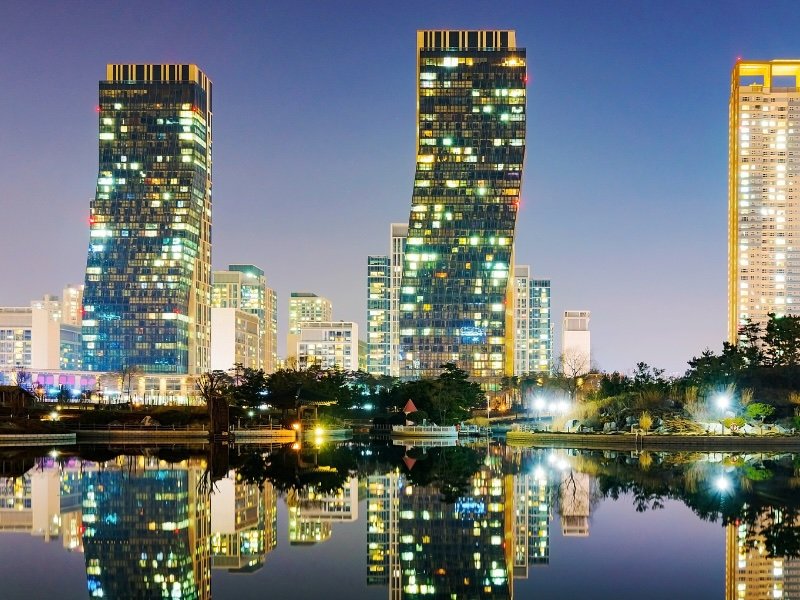
Incheon Accommodations Guide: Hotels, Guesthouses, and Hostels
Luxury Hotels for a Comfortable Stay
Indulge in comfort at Incheon’s luxury hotels, offering top-notch amenities and services.
- Grand Hyatt Incheon:
- Features: Spacious rooms with modern decor, multiple dining options including international cuisine, indoor and outdoor pools, fitness center, and spa facilities.
- Convenience: Located near the airport with free shuttle services, ideal for transit travelers.
- Services: Business centers, concierge assistance, and family-friendly amenities like children’s play areas.
- Oakwood Premier Incheon:
- Features: Serviced apartments with fully equipped kitchens, laundry facilities, and spacious living areas.
- Location: Situated in Songdo, close to shopping centers and Songdo Central Park.
- Amenities: Fitness center, sauna, restaurant, and 24-hour reception.
- Sheraton Grand Incheon Hotel:
- Features: Modern design with panoramic city views, multiple restaurants and bars, indoor pool, and wellness center.
- Location: Adjacent to Songdo Central Park, offering easy access to attractions.
- Services: Meeting facilities, wedding venues, and personalized concierge services.
Tip: Book directly through hotel websites for exclusive deals and consider packages that include breakfast, spa services, or airport transfers for added value. Joining loyalty programs may offer additional perks.
Experience Local Hospitality in Guesthouses
Stay in cozy guesthouses for a more intimate and authentic experience, often run by locals who can provide personalized recommendations.
- Incheon Airport Gogo House:
- Features: Comfortable rooms with en-suite bathrooms, free Wi-Fi, and complimentary airport shuttle.
- Convenience: Ideal for transit travelers needing rest between flights.
- Hospitality: Friendly hosts who can assist with travel arrangements and local tips.
- The November Stay in Honestar:
- Features: Modern rooms in Songdo with kitchenettes, washing machines, and smart TVs.
- Amenities: On-site convenience store, fitness center, and security services.
- Location: Close to shopping malls, restaurants, and public transportation.
- Ganghwado Minbak:
- Experience: Traditional Korean lodging on Ganghwa Island, often featuring ondol (heated floor) rooms and futon bedding.
- Cultural Immersion: Hosts may offer home-cooked meals and insights into local customs.
- Scenery: Enjoy rural landscapes, gardens, and proximity to nature.
Tip: Communicate arrival times with hosts, especially for smaller guesthouses without 24-hour reception. Reading reviews and contacting hosts beforehand ensures your expectations are met.
Budget-Friendly Hostels for Travelers
Opt for hostels if you’re traveling on a budget, offering shared accommodations and opportunities to meet fellow travelers.
- Better Guesthouse:
- Features: Clean dormitories and private rooms near the airport, shared kitchen, common lounge, and free Wi-Fi.
- Atmosphere: Social environment conducive to meeting other travelers.
- Services: Luggage storage, laundry facilities, and tour information.
- Lazy Bird Guesthouse:
- Popularity: Favored among backpackers for its friendly staff and communal spaces.
- Amenities: Free breakfast, bicycle rentals, and garden area.
- Location: Accessible via public transport, with nearby restaurants and shops.
- Incheon Airport Transit Hotel:
- Convenience: Located within the airport, ideal for short stays without leaving the transit area.
- Features: Comfortable rooms, wake-up calls, and basic amenities.
- Services: Hourly rates available, catering to varying layover durations.
Tip: Read reviews to choose a hostel that fits your preferences regarding cleanliness, noise levels, and social atmosphere. Booking in advance during peak seasons secures your spot and may offer better rates.
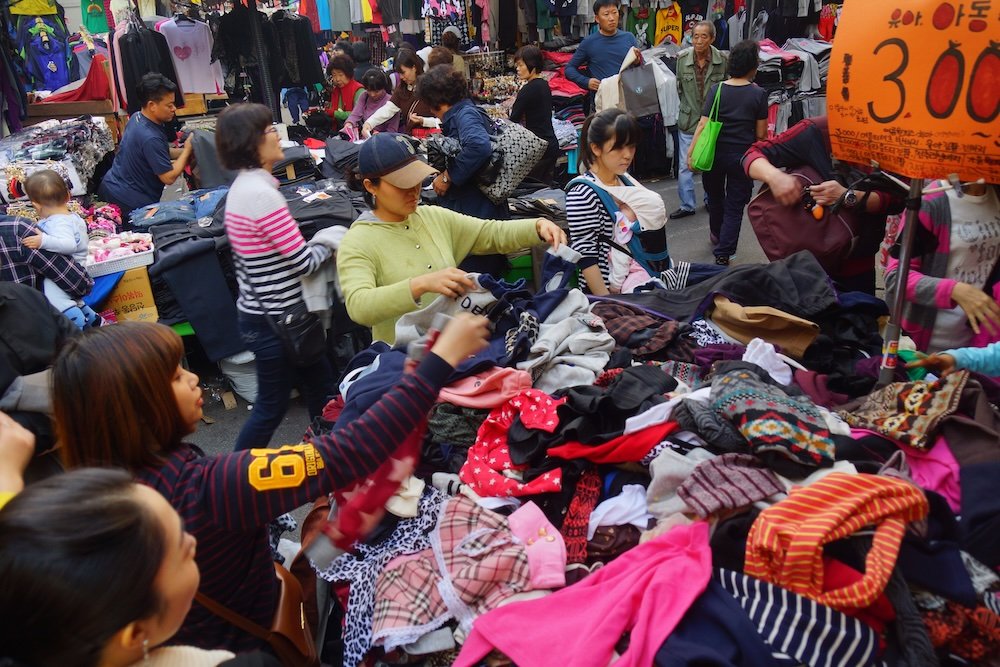
Day Trips From Incheon, South Korea
Visit Seoul
Just a short train ride away, Seoul offers endless attractions that cater to diverse interests.
- Historical Sites:
- Gyeongbokgung Palace: Explore the grandest of Seoul’s five palaces, witness the changing of the guard ceremony, and stroll through the National Folk Museum.
- Bukchon Hanok Village: Wander through alleys lined with traditional Korean houses, offering cultural workshops and tea houses.
- Shopping:
- Myeongdong: A bustling district filled with fashion boutiques, cosmetic stores, and street food vendors.
- Dongdaemun Market: A 24-hour shopping haven with malls, wholesale markets, and designer shops.
- Culinary Delights:
- Street Food: Indulge in korean pancakes (jeon), spicy rice cakes (tteokbokki), and fish-shaped bread (bungeoppang).
- Trendy Cafes: Experience themed cafes, from animal cafes to art-inspired spaces.
Tip: Purchase a Korail Pass for unlimited train travel if planning multiple trips. Using the subway in Seoul is efficient—download a subway app for easy navigation.
Explore Suwon’s Hwaseong Fortress
Discover the UNESCO-listed Hwaseong Fortress in Suwon, showcasing impressive military architecture from the late 18th century.
- Historical Exploration:
- Fortress Walls: Walk along the 5.7 km walls featuring gates, observation towers, and secret passages.
- Hwaseong Haenggung Palace: Visit the temporary palace used by King Jeongjo, featuring restored buildings and cultural performances.
- Cultural Performances:
- Martial Arts Demonstrations: Watch traditional Korean martial arts and archery displays.
- Folk Villages: Experience traditional crafts, music, and dance.
- Local Cuisine:
- Suwon Galbi: Try the city’s famous grilled beef ribs, known for their tenderness and flavorful marinade.
Tip: Wear comfortable shoes for walking and consider guided tours for detailed insights. The Suwon City Tour Bus offers convenient transportation between attractions.
Experience Everland Theme Park
Enjoy a fun-filled day at Everland, South Korea’s largest theme park located in Yongin, near Incheon.
- Thrill Rides:
- T-Express: Experience one of the world’s steepest wooden roller coasters.
- Rolling X-Train: Enjoy loops and twists for adrenaline seekers.
- Safari World:
- Lost Valley: See animals up close on an amphibious vehicle tour, including giraffes, elephants, and white tigers.
- Amazon Express: A water ride simulating a journey through the rainforest.
- Seasonal Festivals:
- Tulip Festival: Admire colorful flower displays in spring.
- Halloween Horror Nights: Encounter themed attractions and performances in autumn.
Tip: Purchase tickets online for discounts and check for shuttle bus services from Incheon. Arriving early helps avoid long queues for popular rides.
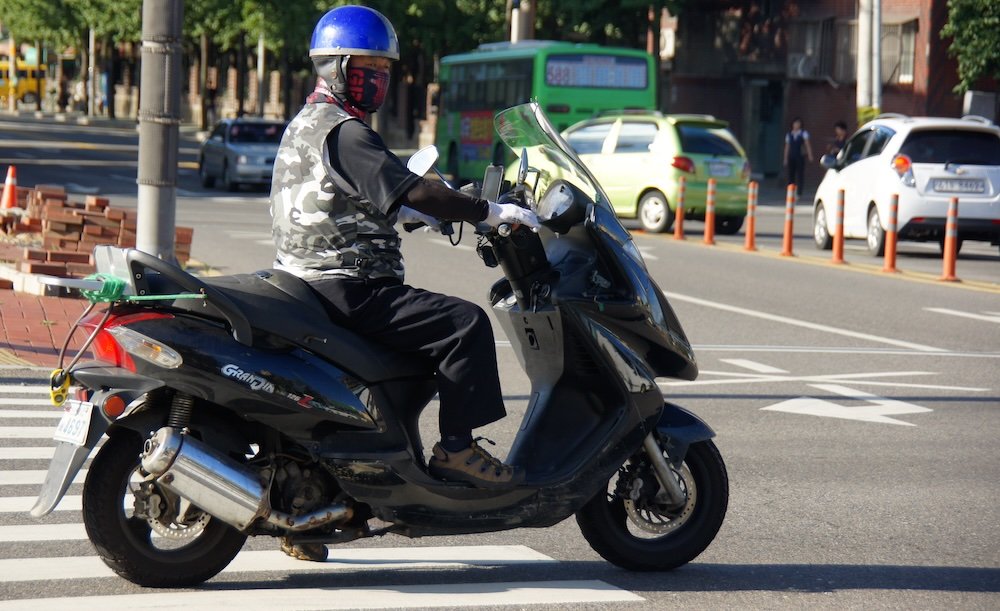
Incheon Transportation Guide
Getting to Incheon
By Air:
- Incheon International Airport: Major gateway with flights from all over the world.
- Transportation: Access the city via AREX train, buses, or taxis.
By Train:
- AREX (Airport Railroad Express): Connects Incheon Airport to Seoul and Incheon stations.
- KTX: High-speed trains available from nearby cities.
By Bus:
- Intercity Buses: Frequent services from Seoul and other major cities.
- Airport Limousine Buses: Comfortable coaches connecting the airport to various locations.
Tip: Purchase a T-money card for seamless travel on public transport and discounted fares!
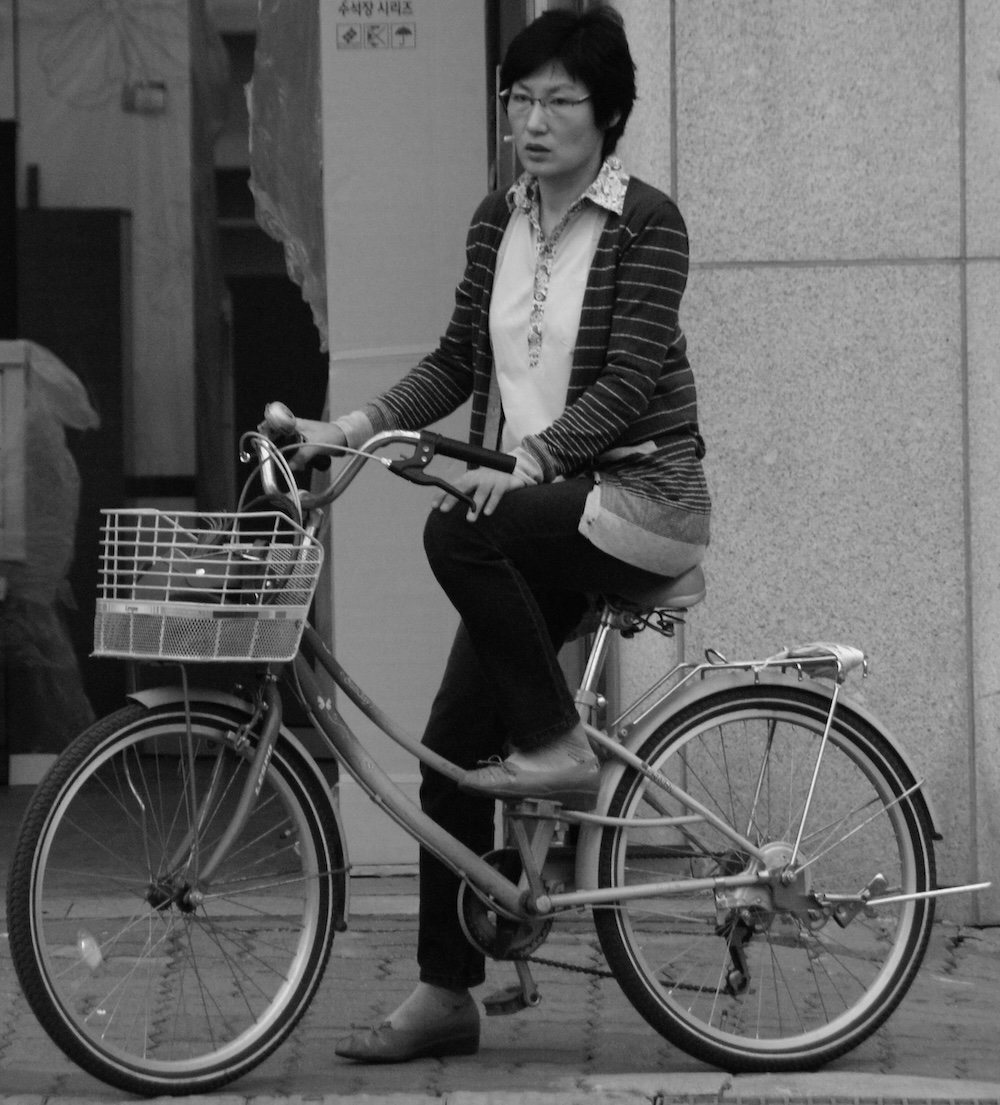
Navigating Within Incheon
Subway:
- Incheon Subway Lines: Covers major areas including Songdo and the airport.
- Connections: Integrated with Seoul’s subway system for easy transfers.
Buses:
- Local Buses: Extensive network reaching most attractions.
- Payment: Use T-money card or cash (exact change required).
Taxis:
- Availability: Readily available; can hail on the street or use apps like Kakao Taxi.
- Fares: Reasonable, but higher during late-night hours.
Ferries:
- Island Access: Ferries operate to nearby islands like Ganghwa and Yeongjong.
Tip: Download navigation apps like KakaoMap or Naver Map with English support for real-time transit information!
Transportation Tips for Tourists
- Language: While public signs are often in English, learning basic Korean phrases can help.
- Rush Hours: Avoid traveling during peak times (8-9 AM and 6-7 PM) for a more comfortable journey.
- Safety: Public transport is generally safe, but always keep an eye on personal belongings.
Tip: Always have the address of your destination written in Korean to show taxi drivers or ask for directions!
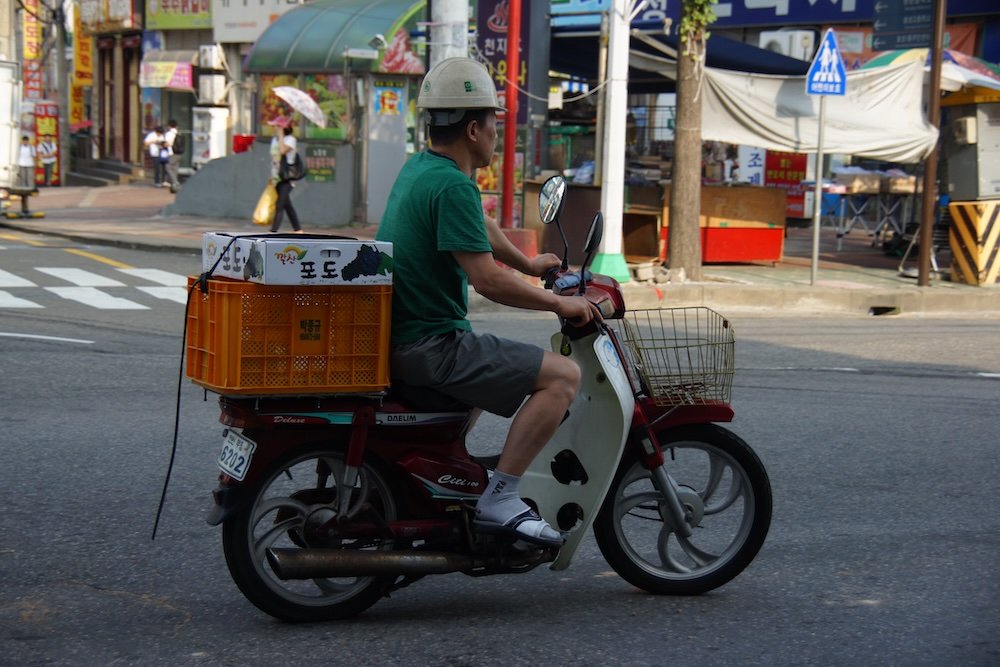
Incheon travel questions answered: logistics, itineraries, safety tips & local-style advice
How many days do you really need in Incheon on a first trip?
It depends. If you’re only using Incheon as a layover hub, one very full day gives you a taste of Chinatown, Songwol-dong Fairy Tale Village, and maybe sunset at Wolmido or Songdo Central Park. But if you actually want to treat Incheon as a destination, I’d aim for 2–3 full days. With two days you can cover the city highlights plus either Ganghwa Island or a beach like Eurwangni. With three days you can slow down, add Sorae Ecology Park or Baedari Book Alley, and still have time for cafe-hopping and markets without feeling rushed.
Is Incheon worth visiting if I’m already planning several days in Seoul?
Yes. Incheon feels like Seoul’s coastal cousin with its own personality. You get a mix of port history, Korean-Chinese culture in Chinatown, smart-city futurism in Songdo, and islands and beaches that Seoul doesn’t offer. It’s an easy day or overnight trip from the capital, but it’s also a great soft landing for jet-lagged arrivals: you can start with gentler sightseeing along the coast before tackling the full intensity of Seoul.
What is the best time of year to visit Incheon and what’s the weather really like?
Generally, spring (April–June) and autumn (late September–early November) are the sweet spots. Spring brings mild temperatures, cherry blossoms, and fresh greens in places like Incheon Grand Park and Ganghwa’s hills. Autumn is crisp and colorful with great hiking conditions and fewer mosquitoes along wetlands and tidal flats. Summer can be hot, humid, and occasionally rainy with the monsoon, but it’s prime time for beaches like Eurwangni. Winter is cold and windy on the coast; it’s still doable, but you’ll want warm layers, a hat, and gloves if you plan to walk waterfront promenades.
Where is the best area to stay in Incheon for first-time visitors?
Personally, I’d narrow it down to three bases. Near the airport or on Yeongjong Island works if you have awkward flight times and want easy access to Eurwangni Beach or quick day trips into the city. Songdo is ideal if you like modern cityscapes, parks, and easy access to Incheon Central Park, smart-city attractions, and big hotels. Bupyeong or central Incheon suits travelers who want nightlife, markets, and good metro connections toward Seoul. If you’re mainly sightseeing in the city with just one airport run at the end, I’d lean toward Songdo or Bupyeong.
How do I get from Incheon Airport into Incheon city and Songdo without getting confused?
Thankfully it’s straightforward. The AREX train and the Incheon subway network connect the airport to central Incheon and Seoul, so you can tap in with a T-money card and follow the bilingual signs. Limousine buses run directly to major hotel clusters in Songdo and Bupyeong, which is handy if you’ve got bulky luggage. Taxis are metered and reliable; just have your destination written in Korean to show the driver. For Songdo specifically, airport buses and taxis are often the most painless option if you’re tired after a long-haul flight.
Do I need a rental car to explore Ganghwa Island and the surrounding areas?
Not necessarily, but it can make life easier. Ganghwa Island has buses, but they’re infrequent and not always intuitive for visitors who don’t read Korean. If you want to string together dolmen sites, Jeondeungsa Temple, viewpoints, and small villages in a single day, a rental car or a guided tour gives you much more flexibility. If you’re happy to focus on just one or two major sights and don’t mind longer travel times, you can manage with public transport and taxis at key points.
Is Incheon safe for solo travelers and late-night exploring?
Overall, yes—Incheon is generally very safe by global standards, even at night. You’ll see families and groups out in Bupyeong, Songdo, and popular waterfront areas well into the evening. Normal city common sense still applies: keep an eye on your bag in busy underground malls, watch your drink in bars, and stick to well-lit streets if you’re walking late. Petty theft isn’t a big issue, but I still avoid leaving phones or wallets unattended on tables in crowded places.
Are there any common tourist scams or annoyances I should watch out for in Incheon?
Nothing dramatic, but there are a few small things to keep in mind. In nightlife areas and markets, you might find the occasional taxi trying to refuse the meter or quote a flat price—just insist on the meter or hop into another cab. At seafood markets or live-fish restaurants, clarify the price per 100g and preparation fee upfront to avoid bill shock. In busy shopping zones, “special deals” on cosmetics or electronics can come with pushy upselling; it’s fine to smile, say no, and walk away.
Is Incheon a good destination for families with kids?
Absolutely. Many of Incheon’s headline spots are naturally family-friendly: Songdo Central Park with boats and Rabbit Island, Wolmido’s amusement rides, Incheon Grand Park’s zoo and bike paths, and fairy tale murals in Songwol-dong. Beaches like Eurwangni offer shallow water and space to run around, while museums and smart-city exhibits add some educational flavor. With kids, I’d base in Songdo or near the airport and build days around a mix of outdoor time, one “wow” attraction, and plenty of snack breaks.
How accessible is Incheon for travelers with limited mobility?
Better than many cities, but still a mixed bag. The airport, metro stations, and modern areas like Songdo tend to have elevators, ramps, and accessible bathrooms. Major parks usually have flat, paved paths suitable for wheelchairs or strollers. Older districts, islands, and historical sites can be more challenging with uneven ground, steps, and steep sections around fortresses or temples. If mobility is a concern, I’d prioritize Songdo Central Park, Incheon Grand Park, the airport spa, modern museums, and waterfront promenades, and be more selective about mountain hikes and older temple complexes.
What should I pack specifically for Incheon’s coastal and island areas?
Layers. Even in warmer months, the breeze off the water can feel cooler than inland, especially in the evenings. A light windbreaker or compact rain jacket is handy almost year-round. For wetlands, tidal flats, and island trips, bring shoes you don’t mind getting wet or muddy, plus a small packable towel. In summer, sunscreen, a hat, and mosquito repellent are your best friends. In winter, add thermal layers and a decent pair of gloves—wind on open promenades like Ara Canal or coastal viewpoints can feel extra biting.
Is it easy to visit the islands and beaches near Incheon on public transport?
Mostly, yes, but timing matters. Popular spots like Eurwangni Beach and some Yeongjong Island beaches are well-connected by buses from the airport area, and ferry terminals serving nearby islands have regular services. The catch is that schedules can thin out in the evening or off-season, and English information isn’t always perfect. I like to screenshot ferry times in advance, arrive early for boats, and plan my last return route before committing to a sunset on a more remote island.
How expensive is Incheon compared to Seoul for food, activities, and accommodation?
In broad strokes, it’s similar or slightly cheaper. Street food, casual restaurants, and markets are very affordable, especially if you’re happy with local dishes and seafood rather than international cuisine. Big-ticket costs usually come from hotels and theme-park-style attractions, which are on par with Seoul prices. The good news is that many of Incheon’s best experiences—parks, promenades, viewpoints, wetlands, fairy tale murals—are either free or very low cost, so you can balance out the occasional splurge pretty easily.
What are some cultural etiquette tips to keep in mind when visiting Incheon?
Nothing too intimidating, but a few small gestures go a long way. Using two hands when receiving change, a drink, or a business card is appreciated. In temples and traditional settings, dress modestly and keep your voice low. In restaurants, it’s normal to share dishes, and it’s polite to pour drinks for others before yourself. On public transport, keep phone calls quiet and offer seats to elderly passengers, pregnant women, and people with disabilities. A simple “gamsahamnida” (“thank you”) with a small nod wins a lot of goodwill.
Can I visit Incheon as a layover without entering South Korea fully?
Sometimes. If you stay entirely airside, you’re limited to the airport’s facilities, but Incheon Airport is famously well-equipped with lounges, the spa, capsule hotels, and cultural corners. For shorter layovers where you’re eligible to pass immigration, you can join airport city tours or take the train/bus into nearby areas like Songdo or Chinatown and still make it back in time. The key is checking your visa situation, your airline’s minimum connection recommendations, and leaving a generous buffer for security on the return.
How does nightlife in Bupyeong compare to evening options in Songdo or near the airport?
Bupyeong is the high-energy option: underground markets, busy streets, bars, noraebang, and a younger, louder crowd that keeps going late. Songdo is more polished—think modern restaurants, wine bars, and scenic night walks along Central Park and the canals, with a slightly more relaxed vibe. Near the airport and on Yeongjong you’ll find quieter bars, cafes, and seafood restaurants geared more to travelers and families than hardcore nightlife. If you want one big night out, I’d head to Bupyeong; if you prefer a chilled evening with city lights and a stroll, Songdo is perfect.
Are day trips from Incheon to places like Seoul, Suwon, or Everland realistic?
Yes. Incheon is plugged into the greater Seoul metropolitan network, so you can ride the subway or trains into Seoul for a full day of palaces, markets, and museums, then head back to sleep by the coast. Suwon’s fortress is also manageable as a day trip by rail and local bus, especially if you start early. Everland is the most ambitious—it requires a combination of metro and bus or a shuttle, and you’ll likely be out for 10–12 hours if you want to make the most of the park—but it’s still doable from an Incheon base if you’re okay with a long day.
Incheon Travel Guide: Final Thoughts
Incheon is more than just a gateway to South Korea. It’s a vibrant city brimming with culture, history, and innovation. From the bustling streets of Chinatown to the serene landscapes of Ganghwa Island, there’s a wealth of things to do in Incheon that cater to all interests.
Whether you’re savoring local delicacies, exploring historical sites, or simply soaking in the scenic beauty, Incheon invites you to discover its many facets. The warm hospitality of its people and the ease of navigating the city make it an ideal destination for both seasoned travelers and newcomers alike.
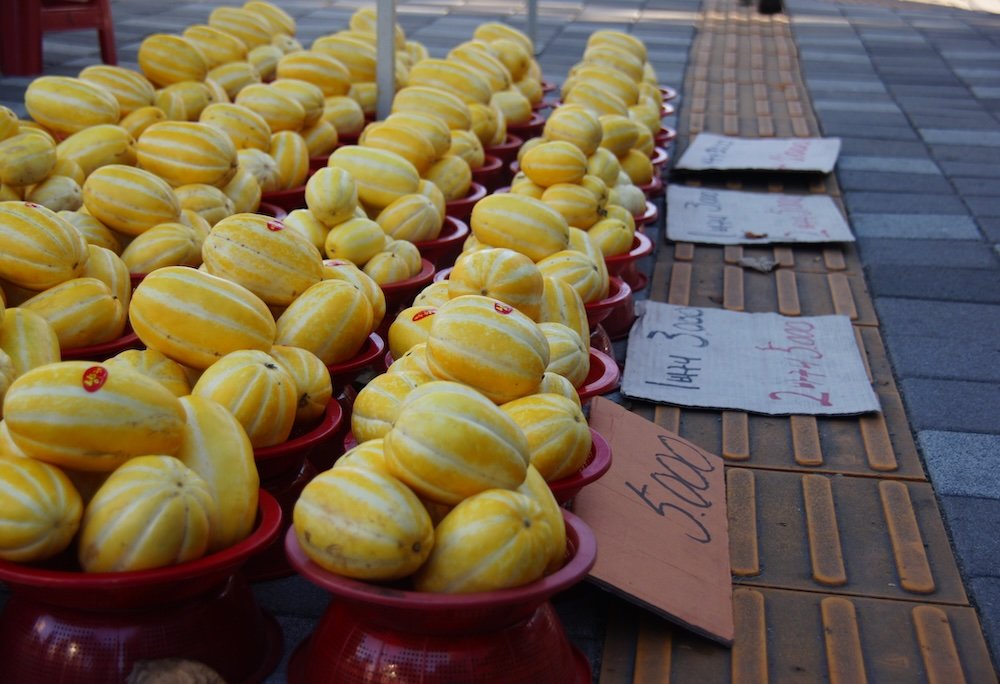
- Diverse Attractions: Catering to history buffs, nature lovers, and urban explorers.
- Cultural Immersion: Opportunities to engage deeply with Korean traditions.
- Memorable Experiences: Create lasting memories in a city where the past and future coexist.
Tip: Keep an open heart and mind as you explore Incheon—you’ll find that the city’s charm lies not just in its sights, but in the stories and experiences that unfold along the way. Safe travels and enjoy every moment of your Incheon adventure!
